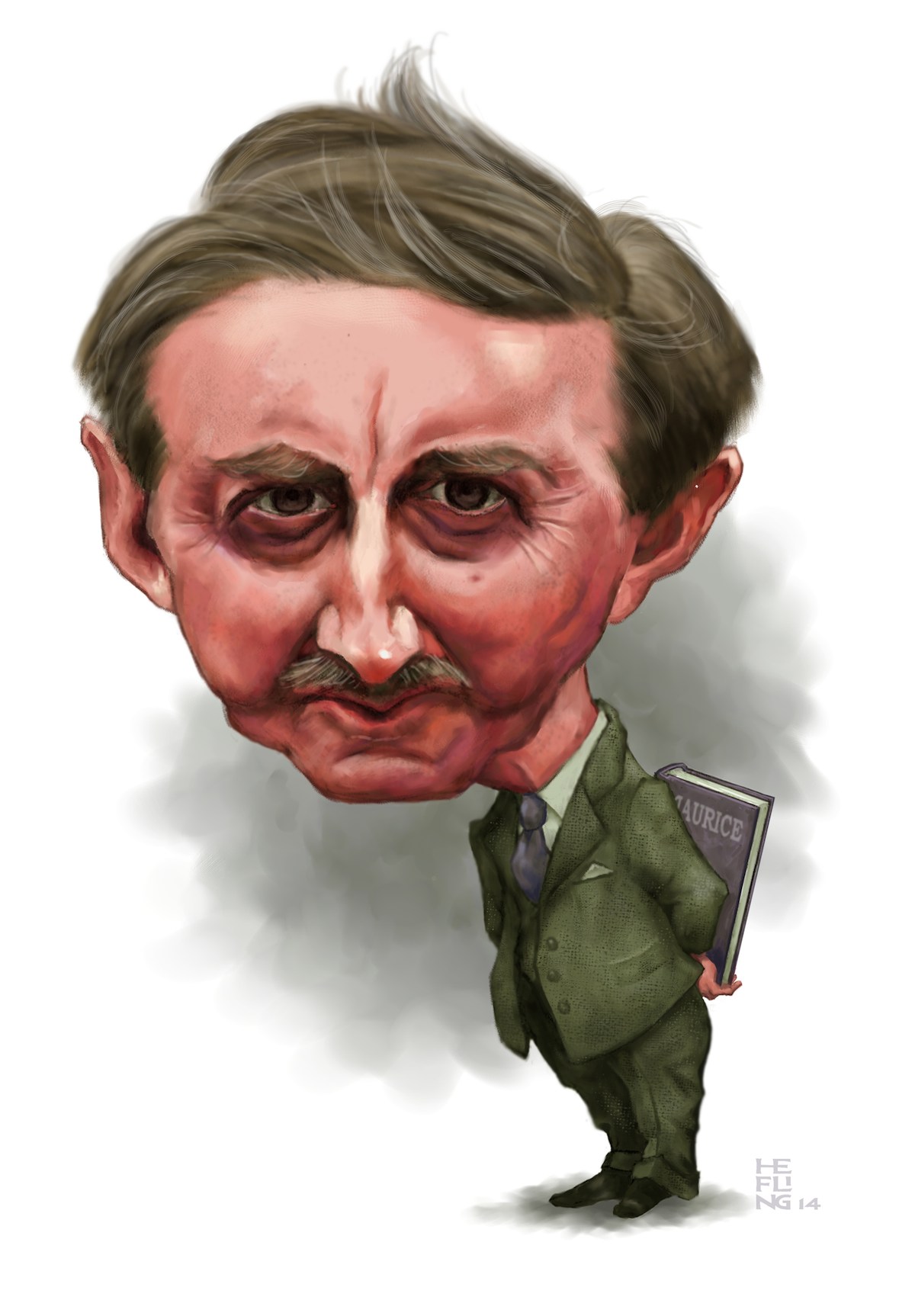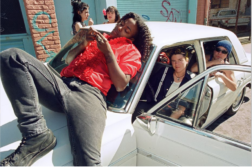THIS YEAR MARKS the centenary of E.M. Forster’s completion of his initial version of the novel Maurice. The most autobiographical of Forster’s six novels, Maurice stands out for its forthright depiction of a homosexual hero whose journey culminates in his embracing his sexual identity and finding a male life partner. In the decades that followed the novel’s completion, Forster occasionally revisited and added to the original manuscript. What remained unchanged was the author’s decision not to attempt publication, even long after he became widely known as England’s greatest living novelist. Ironically, his fame and stature may have augmented his fears that the novel would be greeted with hostility and would destroy his literary reputation.
 Nevertheless, Forster continued to believe that Maurice might play a role in a future era, as hinted at by the novel’s dedication: “Dedicated to a Happier Year.” The terms of his will provided for the possibility of the novel’s publication, along with other stories and personal documents, after his death. On June 7, 1970, he died at the age of 91 at the Coventry home of Bob Buckingham, the love of his life with whom he had shared a long, complex relationship, one that endured even after Buckingham’s marriage. Forster surrounded himself with a circle of gay authors, artists, and composers, including writers Christopher Isherwood and J. R. Ackerley and composer Benjamin Britten. He showed the manuscript of Maurice to many of these friends; it was Isherwood who would rescue the novel after its author’s demise.
Nevertheless, Forster continued to believe that Maurice might play a role in a future era, as hinted at by the novel’s dedication: “Dedicated to a Happier Year.” The terms of his will provided for the possibility of the novel’s publication, along with other stories and personal documents, after his death. On June 7, 1970, he died at the age of 91 at the Coventry home of Bob Buckingham, the love of his life with whom he had shared a long, complex relationship, one that endured even after Buckingham’s marriage. Forster surrounded himself with a circle of gay authors, artists, and composers, including writers Christopher Isherwood and J. R. Ackerley and composer Benjamin Britten. He showed the manuscript of Maurice to many of these friends; it was Isherwood who would rescue the novel after its author’s demise.
In her superb biography of Forster, A Great Unrecorded History (2010), Wendy Moffat describes Isherwood’s crucial role in bringing Maurice out of the literary closet: “For Isherwood, shepherding Forster’s gay fiction posthumously into print was both a sacred trust and a political adventure. He believed that publication would give Forster a second life as a pioneer of gay writing.” When Maurice finally emerged into the public eye in 1971, Forster’s long-held fears proved legitimate: the novel received generally tepid reviews and was considered inferior to his other novels. Reviewers took pains to make it clear that their lack of enthusiasm had nothing to do with its subject matter, but they protested too much to be convincing.
The negative response was not, however, the end of Maurice’s journey. Publication coincided with the burgeoning gay freedom movement in the 1970s and 1980s, and gradually the novel assumed cult status in the gay community. The novel emerged into mainstream consciousness in 1987 in a superb screen adaptation directed by James Ivory and starring James Wilby, Rupert Graves, and Hugh Grant. The second of Ivory’s three adaptations of Forster, Maurice was one of the first mainstream films to depict not only an openly gay love story but one with a happy ending. The film was also notable for its sexual candor, which included lingering full-mouth kissing and male frontal nudity.
A Double Literary Life?
While the overt homophobia that plagued Forster’s professional aspirations has been dramatically reduced in estimations of his work, the author is perennially undervalued, and the role of homosexuality in his impressive body of fiction continues unrecognized. Even admirers of Forster see him as leading a double literary life: enjoying a pre-eminent reputation for novels with heterosexual romantic scenarios such as A Passage to India while in private tinkering with Maurice and writing erotically charged short stories for the amusement of his friends. This dichotomous view of the author does as much of an injustice to his legacy as did the decades of homophobia that prevented him from publishing Maurice in the first place.
The increased openness about homosexuality in literature of the 21st century has, ironically, created new barriers to achieving a fuller understanding of Forster’s accomplishments. Forster does not use the word “homosexual” in any of the novels and short stories published in his lifetime; nor are there scenes that explicitly portray same-sex sexual relationships. Some literary critics have used the term “coded” to describe the subject of homosexuality in Forster, but the term fails to do justice to an author who courageously challenged a host of social norms.
Forster’s complete body of fictional works deserves to be revisited from the perspective of an enlightened, gay-affirmative consciousness, one that also respects the historical context of his work. What emerges from a reinterpretation of this kind is a remarkably rich body of work in which numerous gay characters and same-sex relationships are presented in a humanistic, insightful light. A look at several of his most celebrated novels and stories published in his lifetime illuminates the central role that his homosexuality played throughout his literary career.
Oppressive Masculinity in The Longest Journey
Forster’s second novel, The Longest Journey, was first published in 1907 while the author was still in his late twenties and edging closer and closer to embracing his homosexual identity.
David LaFontaine is a professor in the English Department at Massasoit Community College.






